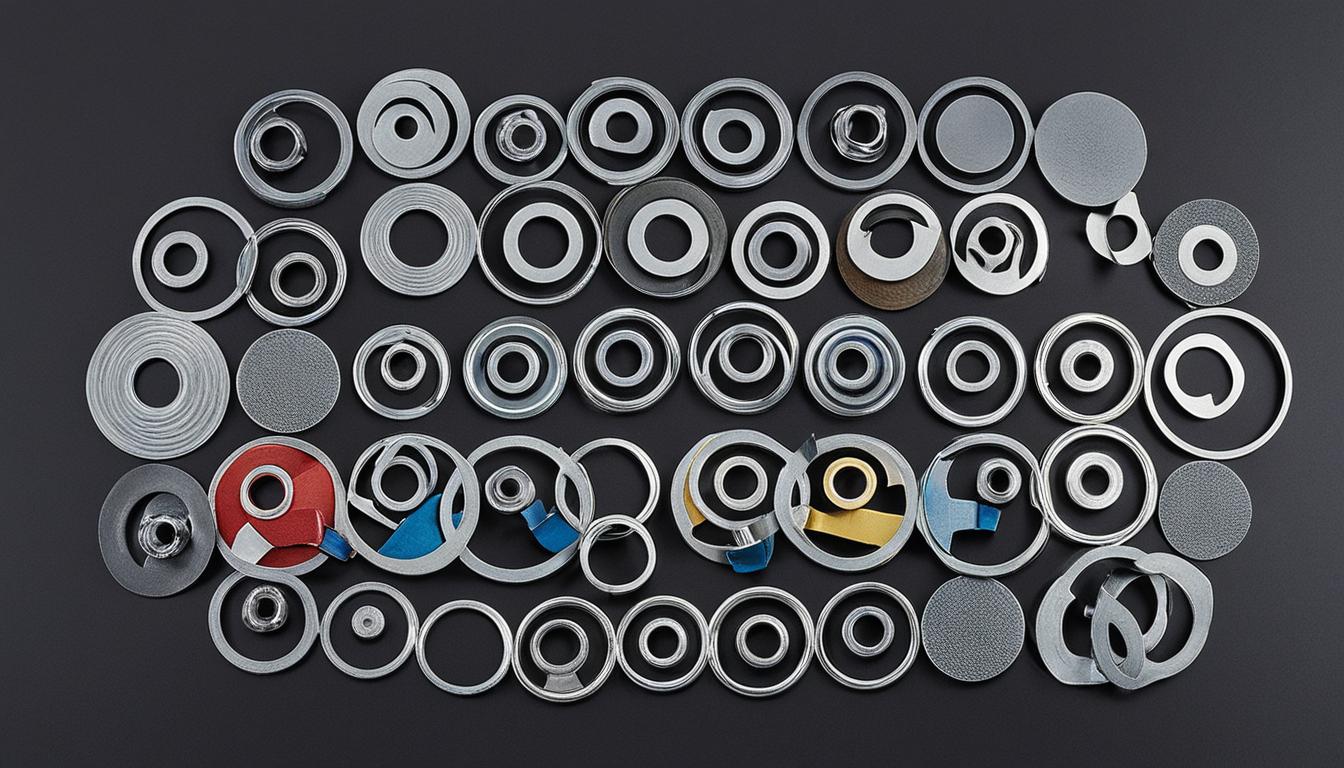When it comes to plumbing fixes, tap washers play a critical role in preventing leaks and controlling the flow of water. Whether you’re dealing with a dripping faucet or a faulty tap, understanding the different types of tap washers is essential for successful repairs. In this article, I will take you through the various types of tap washers, their functions, and how to choose the right one for your specific needs.
Key Takeaways:
- There are different types of tap washers, including flat washers, cone washers, and fiber washers.
- Tap washers create a closed-off seal between the tap seat and the spout, preventing water flow when the tap is turned off.
- Understanding the type of tap you have is crucial for selecting the correct tap washer for repairs.
- Tap washer replacement requires essential tools such as screwdrivers, wrenches, and pliers.
- Proper maintenance and cleaning can prolong the life of tap washers and ensure the proper functioning of taps.
Understanding the Function of Tap Washers
Tap washers play a vital role in the proper functioning of taps and preventing water leaks. These small disc-shaped devices are designed to create a watertight seal between the tap seat and the spout when the tap is turned off. By pressing down against the seat or flow valve inside the tap, tap washers effectively seal off the spout, preventing water from flowing.
The function of tap washers is based on their mechanism. Typically made from materials that can be compressed, such as rubber or felt, tap washers fill irregularities between different parts of a tap fitting. When the tap is closed, the tap washer compresses, creating a tight and secure seal that prevents any water from escaping.
Tap washers are essential components that not only control water flow but also help maintain the integrity of the tap system. Over time, tap washers may wear out or sustain damage from constant use, resulting in dripping or leaking taps. In such cases, replacing the worn-out tap washer is necessary to restore the proper function and prevent further water damage.
To better understand the purpose of tap washers, imagine a tap without a washer. When you turn the tap off, water will continue to flow, causing unnecessary water wastage and potential flooding. The tap washer acts as a barrier, stopping the water flow and ensuring that the tap remains tightly closed when not in use.
How to Tap Washers Work
The mechanism of tap washers is quite straightforward. When you turn the tap off, the tap handle exerts pressure on the tap washer, pushing it against the seat or flow valve inside the tap. As the tap washer presses down, it forms a seal that prevents water from passing through the spout.
When you turn the tap on, the pressure from the water forces the tap washer to lift away from the seat or flow valve, allowing water to flow through the spout. The tap washer acts as a gatekeeper, controlling the opening and closing of the water flow. Without the tap washer, water would continuously flow from the tap, even when it’s supposed to be closed.

The purpose of tap washers is not only to control the flow of water but also to ensure that taps function efficiently and prevent water wastage. By understanding the function and mechanism of tap washers, you can appreciate their importance in maintaining a reliable and water-efficient plumbing system.
Exploring Different Types of Tap Washers
When it comes to tap washers, there are several options available to choose from. Each type of washer has its own unique characteristics and advantages. Let’s take a closer look at the different types of tap washers:
1. Flat Washers
Flat washers are disc-shaped and commonly made from rubber or felt with an adhesive backing. They are specifically designed for high-flow taps and can effectively prevent leaks. However, one downside is that flat washers can sometimes attract dirt or debris, leading to clogging. Despite this, they remain a popular choice for many plumbers.
2. Cone Washers
Cone washers, as the name suggests, have a slightly tapered shape. They are usually made from rubber or felt and fit snugly into the valve seat. This design provides extra sealing power, making cone washers ideal for low-flow taps. However, it’s important to note that cone washers can be more challenging to install compared to other types.
3. Fiber Washers
Fiber washers are made from tough aramid fibers, such as Kevlar. These washers offer superior sealing power and are highly resistant to wear and tear. Due to their durability, fiber washers are a great option for long-lasting tap repairs. However, they can be more expensive compared to other types of tap washers.
Here’s a visual comparison of the different types of tap washers:
| Type | Material | Advantages | Disadvantages | |
|---|---|---|---|---|
| 1 | Flat Washers | Rubber or felt | Effective for high-flow taps | Potential for clogging |
| 2 | Cone Washers | Rubber or felt | Extra sealing power | Can be difficult to install |
| 3 | Fiber Washers | Tough aramid fibers (e.g., Kevlar) | Superior sealing power and durability | Higher cost |
As you can see, each type of tap washer has its own strengths and weaknesses. Consider the specific requirements of your tap and plumbing system when selecting the most suitable washer for your needs.
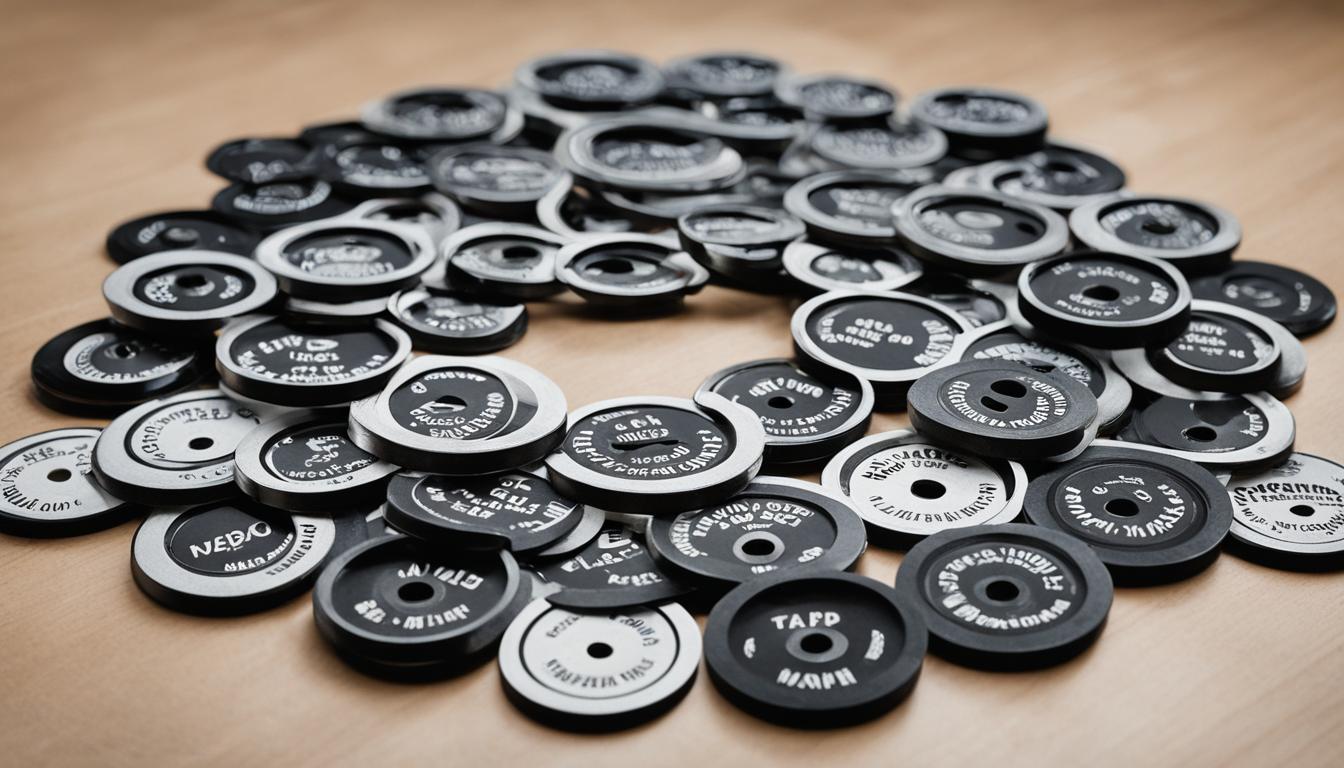
The Four Common Types of Taps
When it comes to tap repairs, it’s essential to understand the different types of taps and the specific tap washers they require. By knowing the type of tap you have, you can ensure that you choose the correct tap washer for effective repairs.
Compression Washer Taps

Compression washer taps are the traditional taps commonly found in many homes. They are controlled by a twisting handle that raises and lowers a compression washer to control the flow of water. These taps are known for their simplicity and reliability, making them a popular choice for many homeowners.
Ball Taps
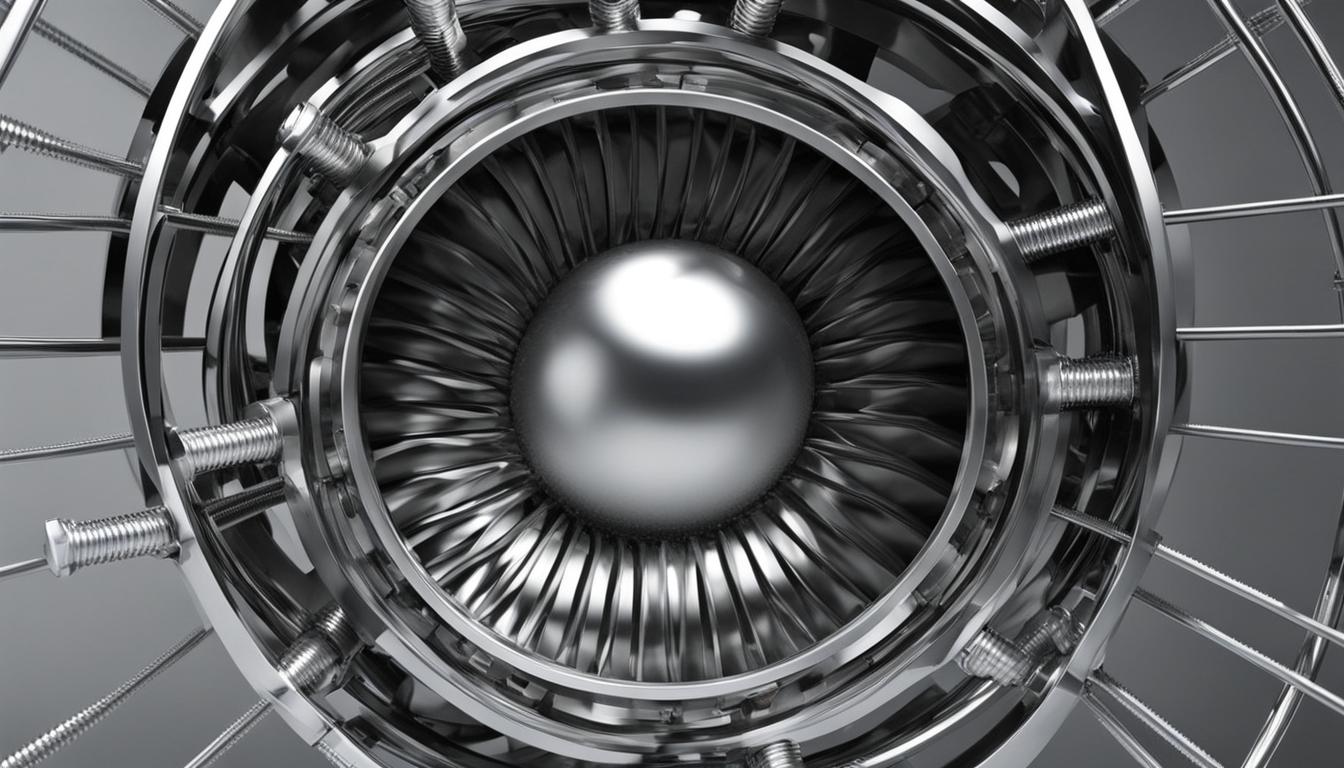
Ball taps, also known as mixer taps, use a hollow ball with a single handle to control the flow of hot and cold water. The ball inside the tap rotates to enable the desired water temperature and flow. These taps offer smooth operation and precise control, allowing users to easily adjust the water to their preferred temperature.
Ceramic Disc Taps
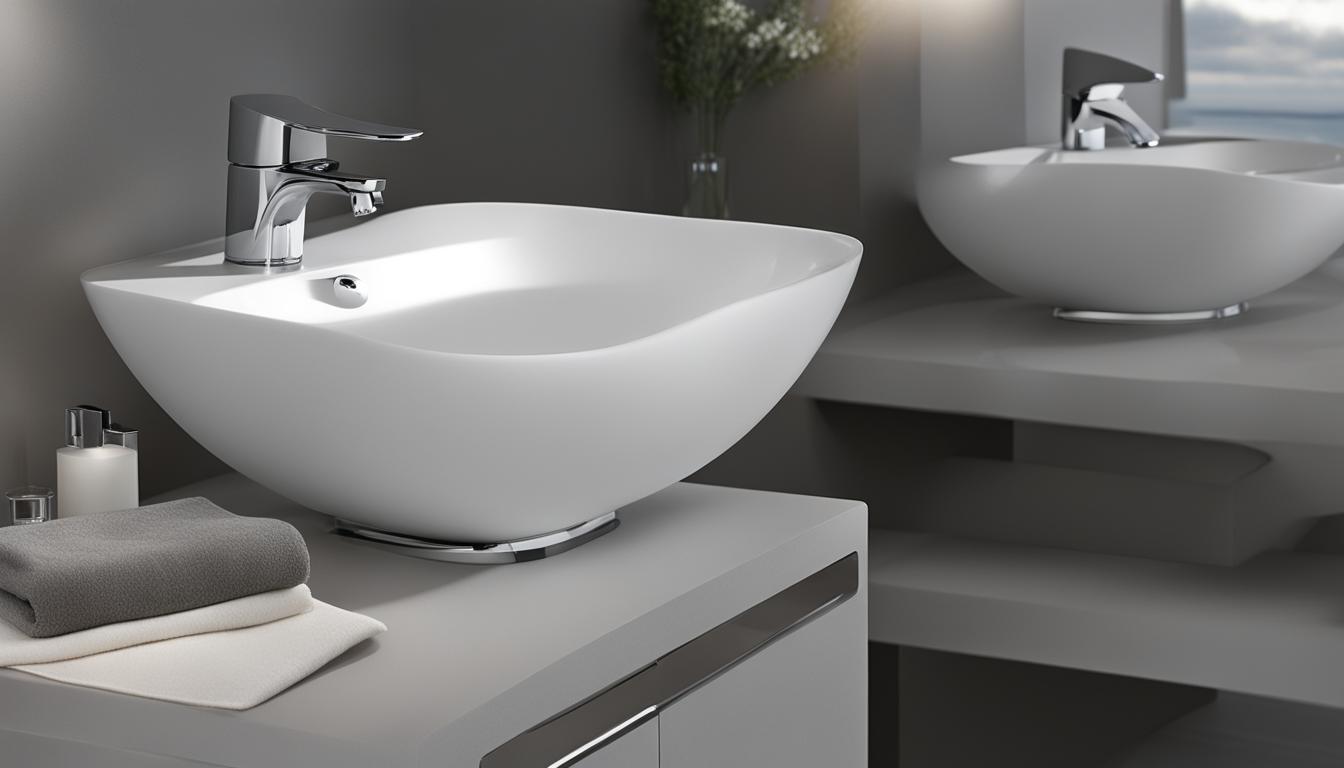
Ceramic disc taps feature a single handle that controls both the water temperature and flow. These taps utilize ceramic discs to control the water flow, providing a reliable and durable solution. Ceramic disc taps are known for their smooth operation, leak-free performance, and long lifespan.
Cartridge Taps
Cartridge taps have an internal cartridge that controls both the water temperature and flow. These taps offer precise control and effortless operation. Cartridge taps are available in various types, including single-handle and double-handle options, providing flexibility and convenience to users.
To summarize, the four common types of taps are compression washer taps, ball taps, ceramic disc taps, and cartridge taps. Each type requires specific tap washers for repairs. By understanding the type of tap you have, you can confidently choose the appropriate tap washer for effective and long-lasting repairs.
Tools Needed for Tap Washer Replacement
Tackling a tap washer replacement project requires a set of essential plumbing tools that will help you get the job done efficiently. Having the right tools on hand ensures that you can tackle any challenges that may arise during the repair process.
Here are the necessary tools for tap washer replacement:
- Slot and Philips Screwdrivers: These screwdrivers are essential for removing mounting screws that hold the tap handle in place.
- Adjustable Wrenches: An adjustable wrench will allow you to unthread lock nuts and tighten or loosen fittings as needed.
- Socket Pliers: Socket pliers come in handy when you need to access tight spaces or apply extra torque to remove stubborn components.
- Adjustable Spanners: Adjustable spanners are versatile tools that can grip and turn different-sized nuts and bolts.
- Basin Wrenches: A basin wrench is specifically designed to reach and tighten nuts in tight spaces, such as under sinks.
- Pipe Grips or Mole Grips: These tools provide a firm grip on pipes and fittings, allowing you to hold them steady during the repair process.
- Faucet Pullers: A faucet puller is helpful when removing tight or stuck faucet handles.
- Crescent Wrenches: Crescent wrenches can be adjusted to fit various sizes of nuts and bolts, providing flexibility during the repair process.
With these essential plumbing tools at your disposal, you’ll be equipped to take on tap washer replacements effectively and efficiently.
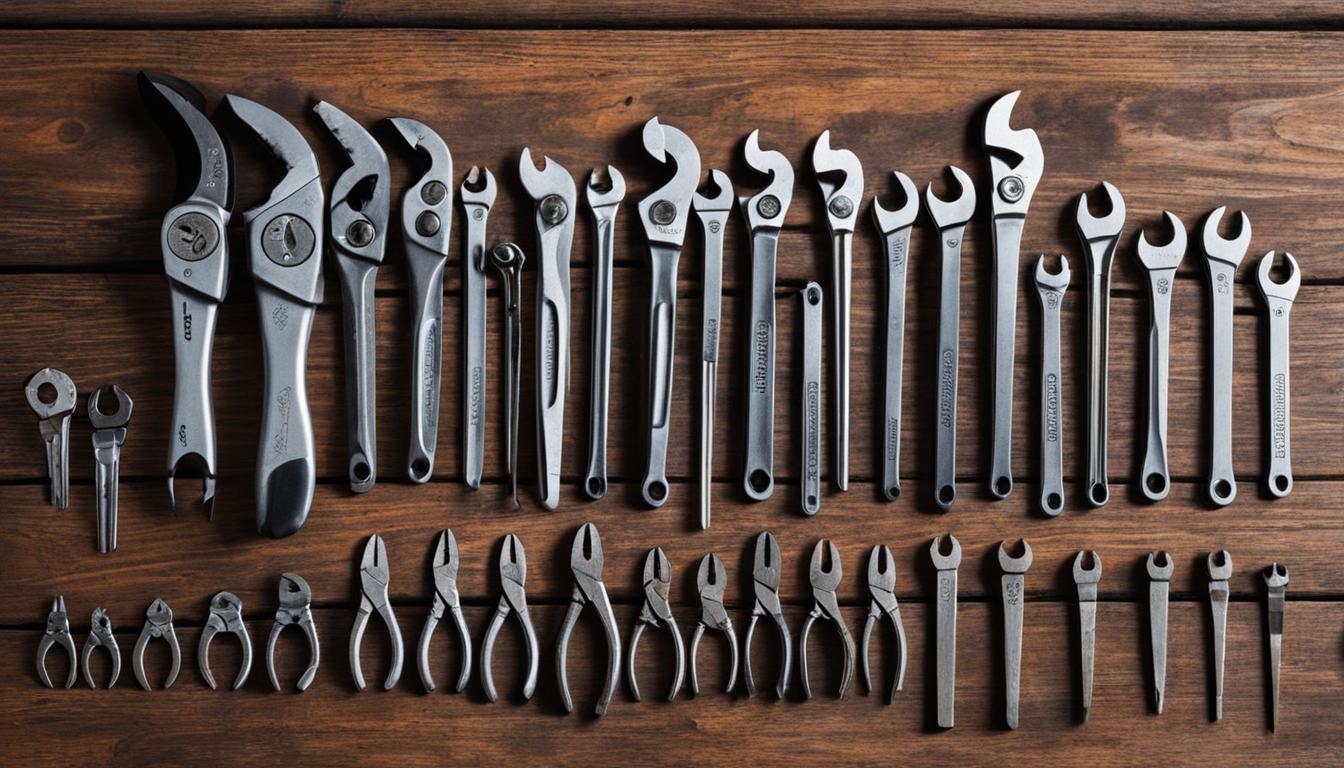
| Tool Name | Description |
|---|---|
| Slot and Philips Screwdrivers | Used for removing mounting screws |
| Adjustable Wrenches | For unthreading lock nuts and tightening or loosening fittings |
| Socket Pliers | Helpful for accessing tight spaces and applying extra torque |
| Adjustable Spanners | Versatile for gripping and turning different-sized nuts and bolts |
| Basin Wrenches | Specifically designed for reaching and tightening nuts in tight spaces |
| Pipe Grips or Mole Grips | Provide a firm grip on pipes and fittings |
| Faucet Pullers | Aids in removing tight or stuck faucet handles |
| Crescent Wrenches | Can be adjusted to fit various sizes of nuts and bolts |
Tips for Tap Washer Replacement
When it comes to replacing a tap washer, it’s essential to follow certain tips to ensure a successful and safe repair. By keeping a few key considerations in mind, you can avoid common mistakes and ensure a secure and effective tap washer replacement.
1. Turn off the water supply
Before you begin any tap repair, always turn off the water supply to prevent any potential flooding accidents. Locate the main water shut-off valve in your home and close it to stop the water flow.
2. Take caution with hot water
If you’re working with taps connected to hot water lines, remember to take caution to avoid burning yourself. Make sure to let the water cool down before starting the repair process, and wear insulated gloves to protect your hands.
3. Use the correct size tools and parts
Using the right size tools and parts is crucial for a successful tap washer replacement. Ensure you have the correct wrenches, pliers, and other necessary tools to avoid damaging the taps or fittings. Likewise, make sure you have the appropriate tap washer size to ensure a proper fit and seal.
4. Avoid over-unscrewing during disassembly
When disassembling the tap to access the washer, be careful not to over-unscrew any components. This will help prevent difficulties during the reassembly process and ensure a smoother repair overall.
5. Seat the new tap washer properly
When installing the new tap washer, make sure to seat it properly using appropriate techniques. Ensure it fits snugly against the valve seat to create a watertight seal and prevent leaks.
By following these tap washer replacement tips, you can confidently tackle your tap repair project while minimizing the risk of errors or issues.
Common Mistakes in Tap Washer Replacement
| Mistake | Explanation |
|---|---|
| Using incorrect tools | Using the wrong tools can damage the tap or fittings, leading to further repairs. |
| Ignoring safety precautions | Failure to take proper safety precautions can result in accidents or injury. |
| Not turning off the water supply | Forgetting to turn off the water supply can lead to flooding and water damage. |
| Incorrectly sized tap washers | Using tap washers that don’t fit properly can cause leaks and water flow issues. |
| Improperly seating the tap washer | If the tap washer is not seated properly, it may not create an effective seal, leading to leaks. |
Step-by-Step Guide to Tap Washer Replacement
Replacing a tap washer is a simple process that can help you fix leaks and ensure the proper functioning of your taps. Follow these step-by-step instructions for a successful tap washer replacement:
- Gather the necessary tools for the job:
- Adjustable wrench
- Flathead screwdriver
- Cloth rag
- Pliers
- A new tap washer of the same size
- Plumbing tape or thread sealant compound
- Begin by turning off the main water supply valve.
- Open the taps to drain any remaining water.
- Remove the tap handle by twisting it counterclockwise.
- Use a flathead screwdriver to remove any decorative caps or covers.
- With pliers, carefully remove the old tap washers, taking care not to damage the valve threads.
- Clean the valve area thoroughly, removing any grime or debris.
- Apply plumbing tape or thread sealant compound to the new tap washers.
- Screw the new tap washers into place, ensuring they are secure.
- Reattach the tap handle and tighten it appropriately.
Congratulations! You have successfully replaced the tap washers in your taps. Remember, if you have any doubts or encounter difficulties during the process, it is always recommended to seek professional help.
Replacing tap washers can help fix leaks and ensure proper water flow.
Post-Repair Cleanup and Maintenance
After successfully replacing a tap washer, it is crucial to perform post-repair cleanup and maintenance to ensure proper function and longevity. Following a few simple steps will help you maintain your tap and keep it in good condition.
Clean the Area: Start by wiping down the area surrounding the tap to remove any grease or debris that may have accumulated during the repair process. This will help maintain a clean and hygienic environment in your kitchen or bathroom.
Scrub the Tap: Use a mixture of vinegar or bleach and warm water to scrub the outside of the tap. This will help remove any stubborn stains or buildup and keep the tap looking clean and shiny.
Check for Leaks: Before returning the tap to its original position, carefully check for any drips or leaks. Turn on the tap and observe if there are any water leaks from the spout or around the handle. If you notice any leakage, it may indicate a problem with the tap installation or the replacement of the tap washer. In such cases, it is advisable to seek professional help to ensure proper functionality.
Maintaining Proper Function: Regularly inspect your tap to ensure it is functioning properly. Check for any signs of wear and tear, such as loose handles or erratic water flow. Address any issues promptly to prevent further damage and maintain the tap’s performance.
Conclusion: By following these post-repair cleanup and maintenance steps, you can ensure that your tap functions properly and remains in good condition. Regular maintenance is essential to prevent future issues and maximize the lifespan of your tap.
Conclusion
Tap washers are an essential component in maintaining the proper functioning of taps and preventing leaks. By understanding the different types of tap washers available and identifying the type of tap you have, you can ensure a successful repair. Replacing tap washers correctly requires using the appropriate tools and following safety precautions. Regular maintenance and cleaning can extend the lifespan of tap washers and contribute to the overall performance of your taps. However, if you are unsure or uncomfortable with the repair process, it is always advisable to seek the assistance of a professional to avoid further complications or plumbing issues.
Remember that tap washers are crucial for controlling water flow and creating a watertight seal. Failure to replace damaged or worn-out tap washers can lead to leaks, water wastage, and potential damage to your plumbing system. Taking the necessary steps to understand tap washer types, following proper repair procedures, and implementing regular maintenance can help prolong the life of your taps and ensure their optimal functionality.
In conclusion, tap washer replacement is a manageable DIY task with the right knowledge, tools, and precautions. By taking the time to educate yourself on tap washer types and utilizing the appropriate techniques, you can successfully undertake tap washer replacement and enjoy uninterrupted water flow in your taps. Remember to prioritize safety, and regular maintenance, and seek professional assistance when needed. With these considerations in mind, you can confidently tackle tap washer replacement and maintain the efficiency of your plumbing system.
FAQ
What are tap washers?
Tap washers are disc-shaped devices that help seal off mains water flow in taps when the tap head is turned off. They are used in various types of taps to control the flow of water and prevent leaks.
How do tap washers work?
Tap washers create a closed-off seal between the tap seat and the spout, preventing water from flowing when the tap is turned off. They press down against the seat or flow valve inside the tap, sealing off the spout.
What are the different types of tap washers?
There are several types of tap washers available, including flat washers, cone washers, and fiber washers. Each type has its own advantages and considerations for different types of taps and water flow.
What are the four common types of taps that require different tap washers?
The four common types of taps are compression washer taps, ball taps, ceramic disc taps, and cartridge taps. Each type has its own internal mechanism that requires a specific type of tap washer for repairs.
What tools do I need for tap washer replacement?
The tools needed for tap washer replacement include slot and Philips screwdrivers, adjustable wrenches, socket pliers, adjustable spanners, basin wrenches, pipe grips or mole grips, faucet pullers, and crescent wrenches.
Do you have any tips for tap washer replacement?
Yes, some tips for tap washer replacement include turning off the water supply before starting any repairs, using the correct size tools and parts, and properly seating the new tap washer using appropriate techniques.
Could you provide a step-by-step guide to tap washer replacement?
Certainly! To replace a tap washer, gather the necessary tools such as an adjustable wrench, flathead screwdriver, cloth rag, pliers, a new tap washer of the same size, and plumbing tape or thread sealant compound. Then, turn off the main water supply valve, remove the tap handle, remove any decorative caps or covers, remove the old tap washers, clean the valve area, apply plumbing tape or thread sealant compound, screw in the new tap washers, reattach the tap handle, and tighten it appropriately.
What should I do after replacing a tap washer?
After replacing a tap washer, it is important to clean up and ensure proper function. Wipe down the area around the tap, scrub the outside of the tap with a mixture of vinegar or bleach and warm water, and check for any drips or leaks before returning the fixture to its original position.
Do you have any final thoughts on tap washer types and replacements?
Tap washers play a crucial role in controlling water flow and preventing leaks. Understanding the different types of tap washers and the type of tap you have is essential for successful repairs. Regular maintenance and cleaning can prolong the life of tap washers and ensure the proper functioning of taps.

